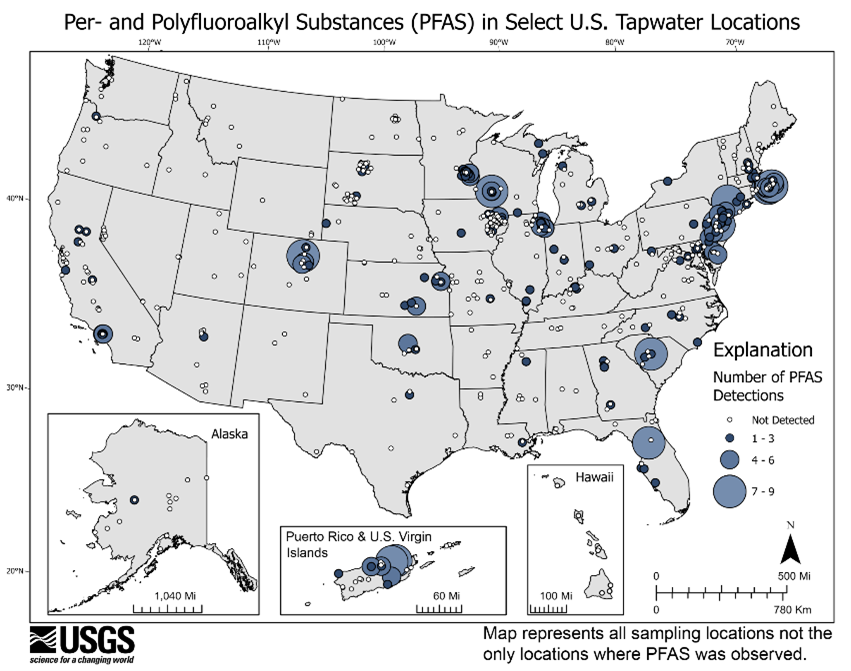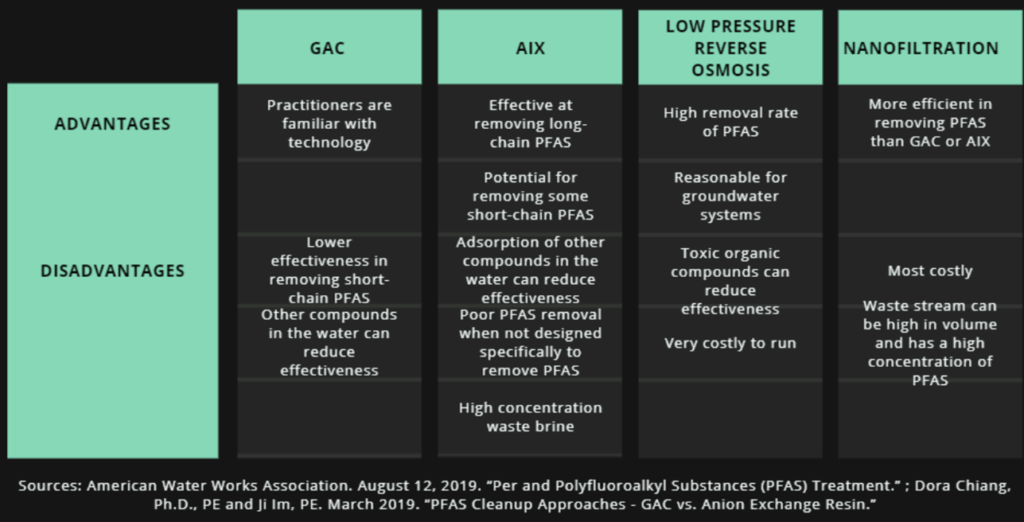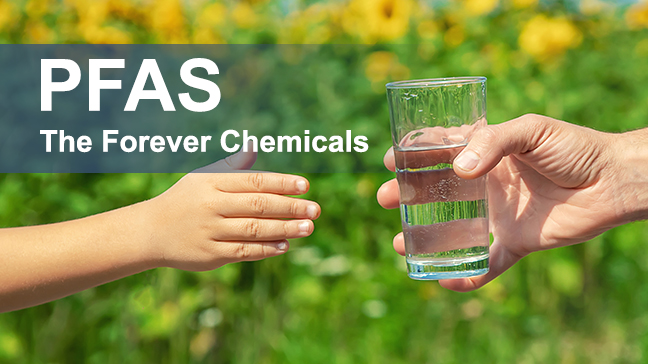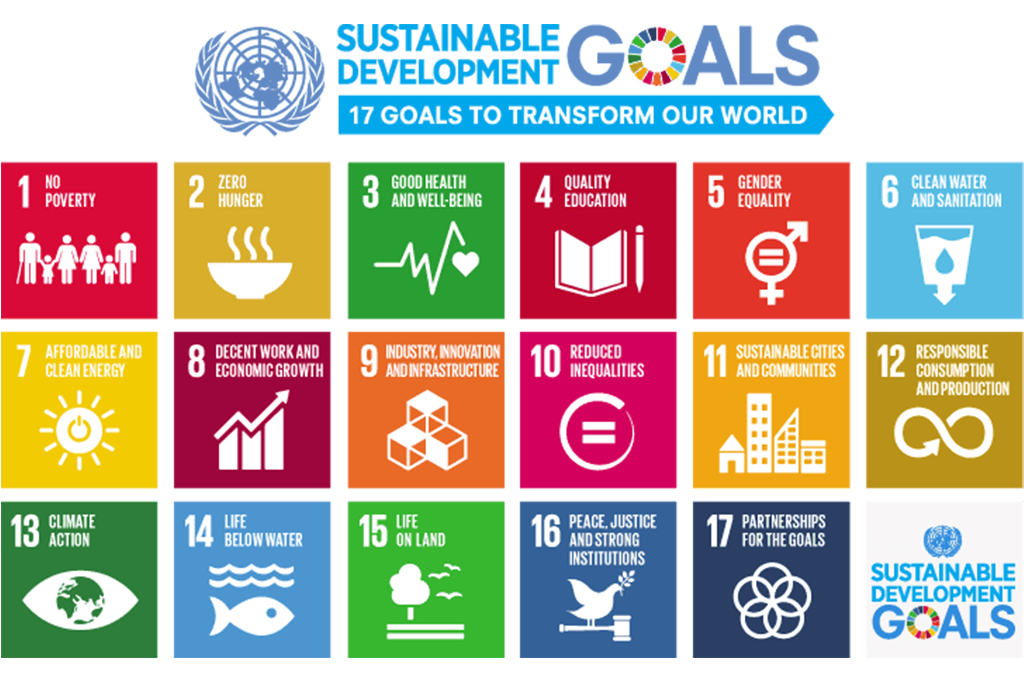In the annals of Greek mythology, the Hydra was a fearsome beast with many heads; for each head cut off, two more would grow in its place. Today, we face a modern Hydra in the form of per- and polyfluoroalkyl substances (PFAS), a group of synthetic chemicals so persistent and pervasive[1] that they have earned the moniker “forever chemicals.” Like the mythical Hydra, PFAS defy our efforts to eliminate them, spreading through our environment and into our bodies with alarming resilience. The PFAS crisis is not just a looming environmental disaster but a ticking time bomb that threatens public health on a global scale. Addressing this issue is no longer a choice; it is imperative for the survival and well-being of current and future generations.
Understanding PFAS: Origins and Pervasiveness
Per- and polyfluoroalkyl substances (PFAS) are synthetic organofluorine compounds with multiple fluorine atoms attached to an alkyl chain. This unique chemical structure makes them highly resistant to heat, oil, stains, grease, and water, which explains their widespread use in various industries. PFAS can be found in everyday household items like non-stick cookware, waterproof fabrics, cosmetics, and even food packaging. Beyond household use, they are extensively employed in firefighting foams, particularly at military bases such as Camp Lejeune and numerous Air Force installations, due to their effective fire-retardant properties.
The persistence of PFAS in the environment is due to the strong carbon-fluorine bonds that make them incredibly stable and resistant to natural degradation processes. As a result, PFAS accumulate in the environment, contaminating water supplies and ecosystems. A recent U.S. Geological Survey (USGS) study estimated that 45% of tap water in the United States contains detectable levels of PFAS[2].
Fig. 1. An interactive map of PFAS in U.S. Tapwater[3] (Source: U.S. Geological Survey)

PFAS foams were invented by Dupont in the 1930s and manufactured widely by 3M in the 1950s[4]. The U.S. military is the largest global user of PFAS because of their use of firefighting foams and this has led to contamination of drinking water supplies at hundreds of sites across the country. A recent Harvard study[5] using numerical modeling of half-life suggests that without remediation PFAS levels above regulatory guidelines will persist for centuries.
Fig. 2. Precursor contribution to groundwater PFAS (%)

This pervasive contamination poses significant health risks, as these chemicals are linked to various cancers, thyroid disease, fertility issues, and developmental problems in children.
Consequences of Inaction: The Camp Lejeune Example
Failure to address PFAS contamination can have devastating consequences, as evidenced by the situation at Camp Lejeune, a U.S. Marine Corps base in North Carolina. For decades, military personnel and their families were exposed to water contaminated with PFAS and other toxic chemicals. The exposure led to numerous health issues, including various cancers, neurological disorders, and birth defects. The Camp Lejeune incident highlights the severe and long-term health impacts of PFAS exposure, underscoring the urgent need for effective treatment and prevention measures.
In 2022, a report by the Pentagon acknowledged that approximately 175,000 U.S. military personnel at two dozen American military facilities drank water contaminated by PFAS that exceeded the U.S. EPA limit. However, a few experts believe that the number is significantly understated.
If we continue to ignore the PFAS crisis, we risk replicating the Camp Lejeune scenario on a much larger scale. Communities across the country and around the world will face increased rates of chronic diseases, strained healthcare systems, and significant economic burdens. The cost of inaction is not only measured in dollars but in human lives and the irreversible damage to ecosystems.
Fig. 3: PFAS Cycle schematic (Source: Walnut Valley Water District)

The High Cost of Treating PFAS
Addressing PFAS contamination comes with a hefty price tag. According to a recent study by actuarial firm Milliman, the cost of removing PFAS from U.S. drinking water systems alone could range from $120 billion to $175 billion[6]. This staggering estimate reflects the extensive upgrades and ongoing maintenance required to effectively treat water supplies and prevent further contamination. The financial burden is exacerbated by the fact that PFAS removal technologies are still in development, with many existing methods being prohibitively expensive and technically challenging.
Small and rural communities are particularly vulnerable, as they often lack the resources to implement necessary treatment systems. The economic disparity in addressing PFAS contamination highlights the need for substantial federal and state funding to support affected areas. Without such funding, many communities will be left to bear the brunt of the cleanup costs, leading to higher water rates and economic hardship for residents.
Methods of PFAS Treatment
Several treatment methods have been developed to remove PFAS from contaminated water, each with its own set of advantages and limitations. Activated carbon filtration is one of the most common methods, effectively adsorbing PFAS molecules from water. Ion exchange resins are another option, exchanging harmful PFAS ions with less harmful ones. Advanced oxidation processes (AOPs) involve the use of powerful oxidants to break down PFAS molecules, while membrane filtration techniques like reverse osmosis and nanofiltration physically remove PFAS from water.
Emerging technologies, such as electrochemical oxidation and supercritical water oxidation, show promise for more efficient and cost-effective PFAS removal. These innovative methods aim to destroy PFAS molecules at a molecular level, reducing the need for disposal and preventing recontamination. However, widespread implementation of these technologies requires further research, development, and substantial investment[7].
Studies have found that reverse osmosis and nanofiltration can be more advantageous in removing PFAS compared to Granular Activated Carbon (GAC) or Anion Exchange Resin (AIX). A combination of pre-treatment using GAC before reverse osmosis and post-treatment using AIX or AOPs is possibly the best-known treatment available for PFAS (and lead).
Fig. 4: PFAS removal technology comparison

Regulatory Efforts and Global Actions
In response to the growing PFAS crisis, several regulatory measures have been implemented both in the United States and internationally. The U.S. Environmental Protection Agency (EPA) has established health advisories for PFAS in drinking water and proposed enforceable limits for specific PFAS compounds. Additionally, states like California and New Jersey have enacted stringent regulations to limit PFAS exposure and contamination[8],[9].
Internationally, the Stockholm Convention on Persistent Organic Pollutants regulates PFAS, with many countries, including those in the European Union, committing to phase out non-essential uses of these chemicals. Countries like Canada and Australia have also taken significant steps to address PFAS contamination through regulations and remediation efforts.
Despite these efforts, challenges remain. The sheer number of PFAS compounds, coupled with the ongoing production and use in some regions, complicates regulatory enforcement and global coordination. Continued advocacy, research, and international collaboration are essential to effectively mitigate the impact of PFAS contamination.
Notable Efforts by Corporate Sector and Academia
Several companies have taken steps to mitigate PFAS contamination. For instance, 3M announced it would discontinue the use of PFAS across its product portfolio by 2025, while W.L. Gore & Associates (maker of Gore-Tex), H&M, and Patagonia are among companies phasing out PFAS in their products. Additionally, significant research efforts are underway at leading universities.
MIT has been exploring innovative remediation techniques, such as electrochemical oxidation, to break down PFAS molecules. Stanford University researchers have been developing advanced filtration systems that utilize materials capable of selectively removing PFAS from water sources, contributing to more effective and scalable solutions for PFAS remediation. Researchers at Harvard have been instrumental in elucidating the health dangers of PFAS, emphasizing the need for comprehensive regulation beyond just drinking water to include products that commonly contain PFAS, such as food packaging and textiles.
These collaborative efforts between industry, academia, and government agencies[10] are crucial in addressing the widespread and persistent issue of PFAS contamination, ensuring safer environments and healthier communities.
Conclusion: Taking Action for a Safer Future
The PFAS crisis is a complex and multifaceted challenge that demands immediate and sustained action. Understanding the origins, persistence, and health impacts of PFAS is crucial for developing effective strategies to address contamination and prevent future exposure. The cost of inaction is far too high, both in terms of human health and economic burden.
To tackle this issue, a comprehensive approach involving robust regulation, advanced treatment technologies, and substantial funding is necessary. Governments, industries, and communities must work together to reduce PFAS use, implement effective treatment solutions, and protect public health. Only through coordinated and determined efforts can we hope to mitigate the impact of these “forever chemicals” and ensure a safer, healthier future for all.
[1] A solution for cleaning up PFAS, one of the world’s most intractable pollutants | ScienceDaily
[2] https://waterfm.com/usgs-study-estimates-45-of-u-s-tap-water-contains-pfas/
[3] PFAS in US Tapwater Interactive Dashboard | U.S. Geological Survey (usgs.gov)
[4] EPA’s New PFAS Rules Don’t Account for Major Source of Drinking Water Contamination (harvard.edu)
[5] Bridger J. Ruyle, Colin P. Thackray, Craig M. Butt, Denis R. LeBlanc, Andrea K. Tokranov, Chad D. Vecitis, and Elsie M. Sunderland, Environmental Science & Technology 2023 57 (21), 8096-8106, DOI: 10.1021/acs.est.3c00675
[6] New study suggests US PFAS clean-up could cost $175bn | GWI (globalwaterintel.com)
[7] A solution for cleaning up PFAS, one of the world’s most intractable pollutants | ScienceDaily
[8] Broad Coalition of Advocates, Community Leaders, and Officials Praise EPA’s New Roadmap on PFAS | US EPA
[9] New Jersey DEP working with chemical companies to curb PFAS – WHYY
[10] FACT SHEET: Biden-Harris Administration Launches Plan to Combat PFAS Pollution | The White House









